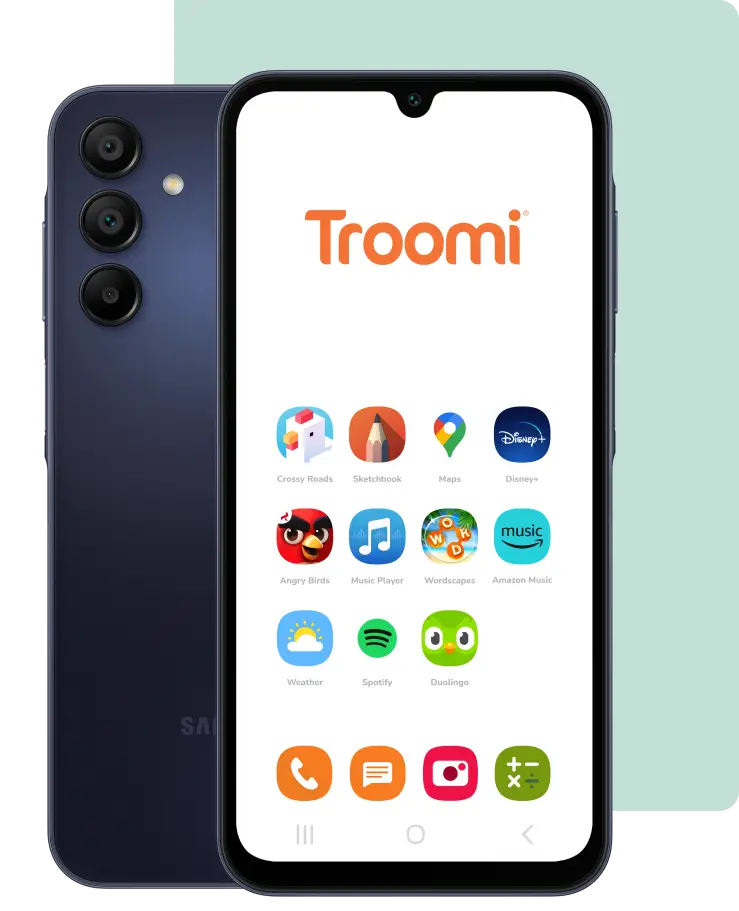Last week, I glanced over at my 10-year-old brother, Hudson, sprawled out on the living room couch, eyes glued to his phone. It was a scene that had become all too familiar. The once energetic boy who loved building Lego towers and playing soccer now seemed absorbed in a digital world. Watching him, I couldn’t help but wonder about the long-term effects of such screen time on his development and well-being. This blog begs the question how much time should kids spend on phones, and we find out the answer.
The Dilemma
The question of how much time kids should spend on phones is a pressing issue for many parents today. On one hand, smartphones offer educational apps, social connectivity, and entertainment, making them valuable tools in our modern lives. Apps like DuoLingo can help children learn new languages, while platforms like Zoom keep them virtually connected with grandparents and friends, especially in these challenging times.
On the other hand, excessive phone use can lead to various problems, including disrupted sleep, reduced physical activity, and negative impacts on mental health. Studies have shown that too much screen time can affect attention spans and even contribute to feelings of anxiety and depression in children.
The Role of Parents
This is where parental guidance becomes crucial. Parents play an essential role in monitoring and guiding their children’s phone use. The goal isn’t to demonize technology but to foster a balanced approach that maximizes the benefits while minimizing the drawbacks.
Setting Healthy Limits
Here are some practical tips for setting healthy limits on phone use:
- Create a Family Media Plan: Sit down with your children and create a plan that outlines acceptable phone use. Include specific times for using phones and designate phone-free zones, such as the dining table and bedrooms.
- Encourage Offline Activities: Promote hobbies and activities that don’t involve screens. Encourage your children to play outside, read books, or engage in creative projects.
- Set Screen Time Limits: Use built-in features on smartphones to set daily screen time limits. For example, Apple’s Screen Time and Google’s Family Link allow parents to monitor and control their children’s phone usage.
- Lead by Example: Children often mimic their parents’ behavior. If they see you constantly on your phone, they are likely to do the same. Show them the importance of unplugging by enjoying screen-free family activities.
- Educate About Digital Citizenship: Teach your children about responsible phone use, including the importance of privacy, online etiquette, and the potential dangers of excessive screen time.
The Power of Example
Setting limits is only part of the solution. The behavior you model as a parent is equally important. If you constantly check your phone during family time or meals, it sends a message to your children that phone use is acceptable anytime. Instead, strive to be present and engaged with your family, demonstrating that real-life interactions take precedence over digital ones.
By creating a balanced environment and setting a positive example, you can help your children develop healthy phone habits that will benefit them throughout their lives.
Conclusion
In conclusion, the key to managing children’s phone use lies in balance and thoughtful parental guidance. By setting clear limits, encouraging offline activities, and leading by example, parents can help their children enjoy the benefits of technology without falling into the trap of excessive screen time. Remember, it’s not about eliminating technology from their lives but about teaching them to use it wisely. After all, the best lessons are the ones that last a lifetime.
Troomi Wireless offers an excellent solution for parents seeking to manage their children’s phone use effectively. With Troomi’s safe smartphone, which is fully parent-controlled, you can set appropriate boundaries and monitor your child’s activities. The built-in GPS location app allows you to access your child’s location at any time, providing peace of mind and ensuring their safety. By leveraging tools like Troomi Wireless, parents can strike the right balance between embracing technology and promoting healthy habits, helping their children develop lifelong skills in managing digital devices responsibly.
Interested in learning more? Click here.


